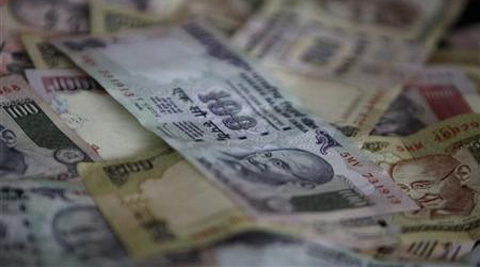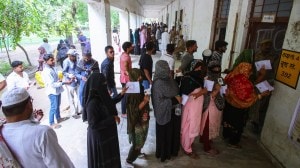- India
- International
Against the flows
India needs to proceed with caution on full capital account liberalisation
 In recent years, India has progressively loosened capital controls. (Reuters)
In recent years, India has progressively loosened capital controls. (Reuters)
The recent troubles with emerging market (EM) currencies have been accompanied by the usual recriminations. The affected governments have accused the US Federal Reserve of being insensitive to them, whereas commentators in developed countries blame the EMs for economic mismanagement and political instability. This glosses over the fundamental risks from liberalised cross-border capital flows.
Conventional wisdom has pushed developing countries to liberalise their capital account to supplement local capital and to deepen and broaden domestic financial markets. In India too, multiple committees on financial sector reforms have recommended a phased progress towards full capital account liberalisation (CAL). In recent years, India has progressively loosened capital controls, mainly to help corporates access low-interest foreign capital and to attract capital to shore up a declining rupee.
But the global financial crisis has unsettled several macroeconomic policy orthodoxies, including the consensus on capital flows. In late 2012, the IMF acknowledged the significant risks posed by cross-border capital flows, “magnified by gaps in countries’ financial and institutional infrastructure”. Arguing that full liberalisation need not be an “appropriate goal for all countries at all times”, it supported context-specific “capital flow management measures”. The recent currency market turmoil lends credence to the long list of arguments against liberalising capital flows.
To start with, episodes of capital inflows, sudden stops and outflows, triggering sharp currency devaluations, have become very frequent. Further, once the tide of capital flows is reversed, most often due to global factors beyond the control of the host country, the potential downside pressures on the currency can be disproportionately greater than the fundamentals of the economy would warrant. As economists Barry Eichengreen and Poonam Gupta show, at such times, economic fundamentals do not provide any insulation and countries with large and liquid financial markets suffer the most. If the markets perceive any political instability or macroeconomic weakness, both always likely even in the better governed countries, the downside risks get amplified.
For example, despite a temporary worsening of the current account deficit, India’s export receipts and foreign exchange cover for external debt service are among the lowest for EMs. Among 18 large EMs, only China and Russia have a lower external debt to GDP ratio than India, and this has been low and stable for a decade. Nevertheless, driven mostly by market perceptions, the rupee has experienced relentless pressure.

Two, several studies, including those by IMF economists, have shown that after controlling for various factors, there is little to suggest any causal relationship between CAL and economic growth. It also has no correlation with lower inflation or higher investment rates.
Three, there is a fundamental risk management problem with external debt financed investments by corporates in infrastructure and non-tradeable sectors. It leaves borrowers exposed to currency risk due to the mismatch between the rupee cash-flow and dollar repayments. Accordingly, in the aftermath of the recent decline in the rupee, many large Indian corporate groups, especially infrastructure firms, face massive unhedged currency risks.
Four, effectively managing a liberalised capital regime is extremely difficult for most developing economies. India’s most recent experience with cautiously phased liberalisation of external commercial borrowings shows that it is impossible to prevent the build-up of highly risky, mostly unhedged, short-term private debt. Since 2007, the medium and long-term external borrowings by Indian corporates have nearly doubled to almost $185 billion by end-2013, and short-term debt, mostly private, has risen steeply by nearly 170 per cent to $96 billion.
In this context, the standard insurance mechanisms against currency runs are not likely to be very effective. In the aftermath of the currency crisis in 1997, many East Asian economies have tried to insure against future crises by building up massive foreign exchange reserves. But as the examples of Malaysia and Thailand highlight, large reserves have not been able to prevent pressures on their currencies.
Five, there is also little evidence that CAL leads to stronger domestic bond markets. Here, the limited success of Latin American countries even after three decades of text-book phased reforms is instructive. Large-scale privatisation of state-owned enterprises massively expanded the depth of equity and bond markets, while privatisation of social security schemes generated demand for these securities. And both these reforms were complemented by the latest capital market regulation and CAL. Despite these “best practice” reforms, the non-financial bonds outstanding were just 2 per cent of the GDP in 2010 and pension funds invest mostly in government bonds.
Further, a 2011 McKinsey report shows that bond markets channel a very small share of non-financial firms’ debt, not only across EMs but also in many developed countries. Even in infrastructure, domestic bank loans dominate, and less than 5 per cent of all global financing in 2011 came from long-term bonds.
Finally, it is questionable how much large countries like India can rely on foreign capital. In fact, one of the distinguishing features of the East Asian economies, including Japan and China, has been the limited dependence on foreign capital, aside from foreign direct investments. We need to undertake reforms that stem our alarming decline in savings rates and encourage citizens to save using financial instruments, rather than in unproductive assets like gold and real estate. Further, there is no evidence that India has escaped the “original sin” problem — that developing countries will experience difficulty in borrowing in foreign currency.
If the domestic currency is strong and stable, and the country’s institutional systems are effective, then more often than not, capital flows can be a force for good. But, as the IMF rightly acknowledges, in most developing countries, and India is no exception, these are questionable assumptions.
Markets overreact when countries respond to signs of currency trouble by reintroducing capital controls. It makes the original decision on liberalisation all the more critical. It is no surprise that China, which had strong capital controls all along, has been the only country to escape all the currency crises of the past decade and a half. All this should be reason enough for India to pause on its pursuit of full CAL.
EXPRESS OPINION
More Explained
Apr 26: Latest News
- 01
- 02
- 03
- 04
- 05











































